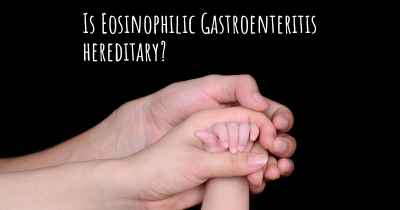What is the history of Eosinophilic Gastroenteritis?
When was Eosinophilic Gastroenteritis discovered? What is the story of this discovery? Was it coincidence or not?

Eosinophilic gastroenteritis (EG) is a rare chronic inflammatory disorder that affects the gastrointestinal tract. It is characterized by the infiltration of eosinophils, a type of white blood cell, into the walls of the digestive system. This condition was first described in medical literature in the late 1930s, and since then, our understanding of EG has evolved significantly.
Early Observations:
The earliest observations of EG date back to the 1930s when physicians noticed a group of patients presenting with symptoms such as abdominal pain, diarrhea, and weight loss. These patients also had high levels of eosinophils in their gastrointestinal tissues. However, at that time, the exact cause and nature of this condition were not well understood.
Advancements in Diagnosis:
Over the years, advancements in medical technology and diagnostic techniques have greatly contributed to our understanding of EG. In the 1970s, the development of endoscopy allowed physicians to directly visualize the gastrointestinal tract and obtain biopsies for analysis. This enabled the identification of eosinophilic infiltration in the digestive system, leading to more accurate diagnosis of EG.
Classification and Subtypes:
As research progressed, it became evident that EG is not a single disease but rather a spectrum of disorders. In the 1990s, a classification system was proposed to categorize EG into three subtypes based on the depth of eosinophilic infiltration:
- Mucosal EG: In this subtype, eosinophils infiltrate the mucosal layer of the gastrointestinal tract.
- Muscular EG: Eosinophils infiltrate the muscular layer of the digestive system.
- Serosal EG: Eosinophils infiltrate the serosal layer, which is the outermost layer of the gastrointestinal tract.
Possible Causes and Triggers:
The exact cause of EG remains unknown, but several theories have been proposed. It is believed that a combination of genetic predisposition and environmental factors may play a role in the development of this condition. Allergies, food sensitivities, and immune system dysfunction are among the factors that have been suggested as potential triggers for EG.
Prevalence and Demographics:
EG is considered a rare disorder, and its prevalence in the general population is not well established. However, it is believed to be more common in certain demographic groups. For instance, studies have shown a higher incidence of EG in young adults and middle-aged individuals. Additionally, males appear to be more frequently affected than females.
Symptoms and Clinical Presentation:
The symptoms of EG can vary depending on the subtype and the specific area of the gastrointestinal tract affected. Common symptoms include abdominal pain, diarrhea, nausea, vomiting, bloating, weight loss, and malnutrition. In severe cases, complications such as bowel obstruction or perforation may occur.
Diagnosis and Treatment:
Diagnosing EG can be challenging due to its rarity and the similarity of symptoms to other gastrointestinal disorders. It often requires a multidisciplinary approach involving gastroenterologists, allergists, and pathologists. Diagnostic tests may include blood tests, endoscopy, imaging studies, and biopsies.
As for treatment, there is no cure for EG, and management focuses on controlling symptoms and reducing eosinophilic inflammation. Treatment options may include dietary modifications, elimination diets, corticosteroids, immune-modulating medications, and in some cases, surgical intervention.
Ongoing Research:
Research on EG is ongoing, aiming to further understand its underlying mechanisms, improve diagnostic techniques, and develop more targeted therapies. Scientists are investigating the role of specific genes, immune system dysregulation, and the gut microbiome in the development of EG. Additionally, clinical trials are exploring the efficacy of novel medications and biologic agents in treating this condition.
Conclusion:
Eosinophilic gastroenteritis is a complex and rare disorder that has gradually gained recognition and understanding over the years. Advancements in diagnostic techniques and research have allowed for better classification, diagnosis, and treatment of EG. While there is still much to learn about this condition, ongoing research offers hope for improved management and outcomes for individuals affected by EG.
Posted Sep 14, 2017 by Gail 2000
Posted Jul 27, 2020 by Sydney 4050








